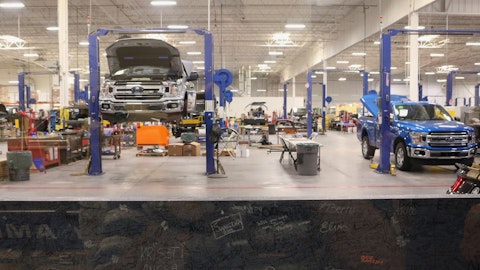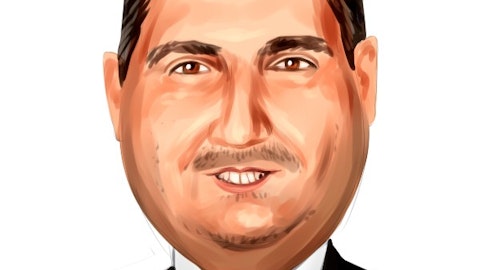Lori Flees: Sure. Thanks, Michael. We did, as I mentioned, have a really strong start to 2024 with 38 total new additions and an even split between franchise and company. The Q4 typically tends — at least on the acquisition side, tends to be a strong quarter would every calendar quarter 1, but calendar Q4 is typically strong as acquisitions tend to try to close out, particularly on the franchise side, where their calendar and fiscal aligned to the end of the year. So we did expect these. These were in the pipeline. We had full visibility of them. and it was a really strong start. You should expect we’re very much feel great about the guidance we’ve given of $140 million to $170 million for the year, of which $55 million to $70 million will come from our franchise partners.
That should, unlike last year be more balanced throughout the year, although Q2 January through March, given the weather you can have a seasonally lower number of new builds or new adds in the quarter. But we expect that to be pretty balanced, and we feel really good about the guidance rates that we’ve provided. Now you mentioned just broadly, we have then very clear in our acceleration of the network to get over 3,500 units, we’re going to really increase the number of new units coming on the franchise side. We’ve been very clear that we’re working to get to [ 150 million ] units per year by 2027. And we continue to make progress against that. Now that comes from both the existing franchise partners we have and our conversations with them have been very positive.
And we continue to look for ways that we can support them with more detailed retail analytics, some real estate support, business development, pipeline generation from an M&A perspective, etc. And so we feel really good about the ramp that we will get from our existing partners. And then the second part is about recruiting, again, just a handful of more scale franchise partners to develop some white space regions or to help transition existing franchise players who are at points in their career where they want to cash out on the significant wealth that’s been created through the franchise that they’ve built with us and bring in new partners who want to develop the areas that those businesses sit in. Now we did expect that was going to take time.
One is you’ve got to line up the transition timing as well as the white space timing with those conversations. But the conversations continue and progress. And again, we feel very good about the progress that we’re making.
Michael Kessler : Great. Thank you. Maybe just a follow-up on capital allocation and shareholder returns. I know Q2 will be a big one there with the repurchase of the notes plus the buyback. I’m sure you’re probably thinking through what may happen after that. But given I think where leverage is today, which is pretty healthy in the range or maybe at the lower end of the range that you’ve outlined is like — I guess I’m curious kind of the range of options that are on the table, including maybe even re-levering up to accelerate returns once you exhaust the buyback? Or is this more conservative, just kind of see how it plays out, just kind of what are the decision factors as you approach that post Q2?
Mary Meixelsperger: Yes, Michael, I’d start just in terms of our target leverage ratio, which is an adjusted leverage ratio based on how rating agencies or S&P, in particular, measures, our leverage. And just for everyone’s information, if you forgot the rating agency adjusts for both operating leases, as well as employee benefit plan obligations. So when you make those adjustments, the sum of the outstanding liabilities related to those operating leases and pensions is about $400 million, which is about a full turn of leverage. We actually are just slightly above the high end of our targeted leverage range. So our first capital allocation priority will be to get us within that range that we’ve targeted and then we’ll look at using the balance sheet as well as our operating cash flows to provide further returns to shareholders.
My expectation is it will take us a little bit of time short term here in the next couple of quarters to get that range — that target leverage range back into below the high end of our expectations and then — of what we’re targeting. And from there on, I would expect that we would, again, be focused on capital allocation to return cash to shareholders via share repurchases once we’re back within that targeted leverage ratio.
Michael Kessler : All right, thanks, guys
Operator: Thank you. The next question goes to Daniel Imbro of Stephens Inc. Daniel, please go ahead. Your line is open.
Daniel Imbro: Yeah. Hey, good morning, everybody. Thanks for taking our questions. Maybe want to start on gross margins. We saw a little bit of a larger step down maybe 4Q to 1Q on the gross margin side that we have seasonally in the past, especially with the easy comparison last year. Can you just talk through maybe the drivers of gross margin like labor? And how you’re thinking about that line item for the rest of the year as comps maybe improved with using clears?




